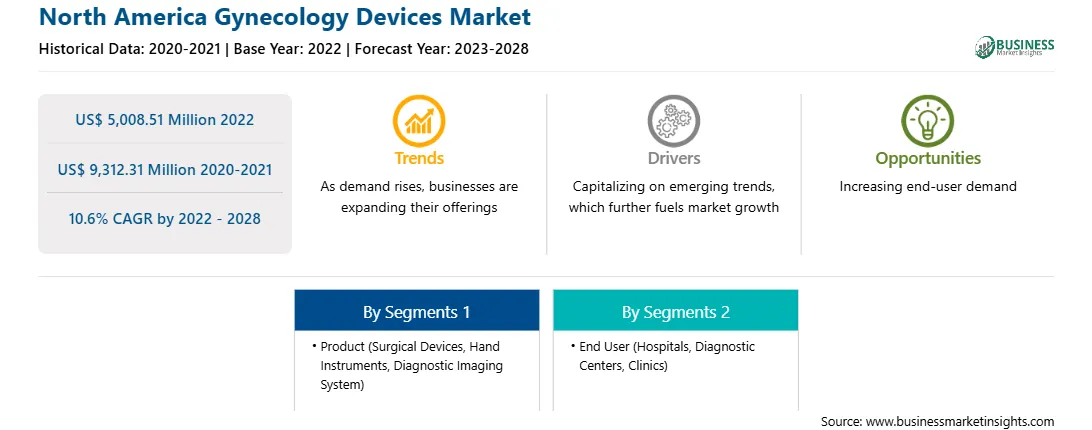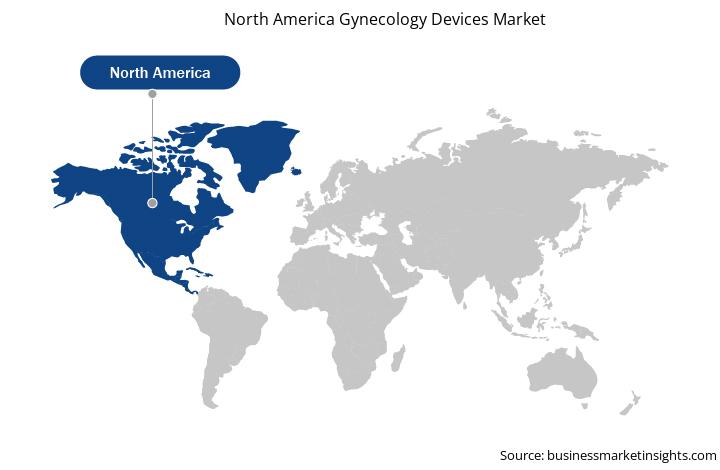Major factors driving the market growth include the rising number of gynecological diseases and increasing technological advancements in devices used for women. However, the limited access to contraception is likely to hamper the market growth during the forecast period. Gynecological diseases include uterine cancer, cervical cancer, polycystic ovary syndrome, and ovarian cancer. As per the Institute for Health Metrics and Evaluation (IHME) research data, in 2019, ~8,640 deaths were caused due to gynecological diseases, and 37% of the female population was living with these diseases globally. For instance, endometrium cancer is the most common cancer of the female reproductive organs in the US, and uterine cancer is the sixth most common cancer in women in the country. According to the American Society of Clinical Oncology (ASCO) data, ~417,367 people were diagnosed with uterine cancer in 2020. Women diagnosed with endometrial cancer are typically aged between 60 years and above. As per the American Cancer Society, ~65,950 new cases of uterine cancer will be diagnosed by 2022, with ~12,550 associated deaths among women patients in the US. Cervical cancer is one of the severe threats to women’s lives globally. According to the WHO 2018 data, cervical cancer leads to the death of one woman every two minutes, and nine in ten women die in developing countries. According to global cancer observatory data, cervical cancer is the 7th most common cancer globally, with over ~604,000 new cases diagnosed in 2020. Cervical cancer led to the death of ~341,831 people worldwide in 2020. Moreover, ovarian cancer is the 8th most common cancer in women and the 18th most common cancer overall. In 2020, ~313,959 new cases of ovarian cancer were diagnosed, and 207,252 people died as a result of it globally. Cervical cancer is a type of cancer that can be prevented and treated. The early detection of cervical cancer can be effectively managed and prevented with human papillomavirus (HPV) vaccination. Ovarian cancer has forced women to show importance to clinical conditions of the related gynecological diseases. Therefore, the rise in the number of gynecological disorders and the easy prevention and treatment are encouraging women to get diagnosed and treated. Further, the availability of gynecological devices used for the treatment of gynecological conditions and disorders is driving the growth of the gynecology devices market.
Strategic insights for the North America Gynecology Devices provides data-driven analysis of the industry landscape, including current trends, key players, and regional nuances. These insights offer actionable recommendations, enabling readers to differentiate themselves from competitors by identifying untapped segments or developing unique value propositions. Leveraging data analytics, these insights help industry players anticipate the market shifts, whether investors, manufacturers, or other stakeholders. A future-oriented perspective is essential, helping stakeholders anticipate market shifts and position themselves for long-term success in this dynamic region. Ultimately, effective strategic insights empower readers to make informed decisions that drive profitability and achieve their business objectives within the market.

| Report Attribute | Details |
|---|---|
| Market size in 2022 | US$ 5,008.51 Million |
| Market Size by 2028 | US$ 9,312.31 Million |
| Global CAGR (2022 - 2028) | 10.6% |
| Historical Data | 2020-2021 |
| Forecast period | 2023-2028 |
| Segments Covered |
By Product
|
| Regions and Countries Covered | North America
|
| Market leaders and key company profiles |
The geographic scope of the North America Gynecology Devices refers to the specific areas in which a business operates and competes. Understanding local distinctions, such as diverse consumer preferences (e.g., demand for specific plug types or battery backup durations), varying economic conditions, and regulatory environments, is crucial for tailoring strategies to specific markets. Businesses can expand their reach by identifying underserved areas or adapting their offerings to meet local demands. A clear market focus allows for more effective resource allocation, targeted marketing campaigns, and better positioning against local competitors, ultimately driving growth in those targeted areas.

North America Gynecology Devices Market Segmentation
The North America gynecology devices market is bifurcated into product and end user. Based on the product, the market is segmented into surgical devices, hand instruments, and diagnostic imaging systems. Based on the end user, the market is segmented into hospitals, diagnostic centers, clinics, and others. By geography, the North America gynecology device market is segmented into the US, Canada, and Mexico.
Boston Scientific Corporation; CooperSurgical, Inc; Ethicon; General Electric Company; Hologic, Inc.; KARL STORZ SE & Co. KG; Medtronic; Olympus Corporation; Richard Wolf GmbH.; and Stryker are among the leading companies operating in the North America gynecology device market.
The North America Gynecology Devices Market is valued at US$ 5,008.51 Million in 2022, it is projected to reach US$ 9,312.31 Million by 2028.
As per our report North America Gynecology Devices Market, the market size is valued at US$ 5,008.51 Million in 2022, projecting it to reach US$ 9,312.31 Million by 2028. This translates to a CAGR of approximately 10.6% during the forecast period.
The North America Gynecology Devices Market report typically cover these key segments-
The historic period, base year, and forecast period can vary slightly depending on the specific market research report. However, for the North America Gynecology Devices Market report:
The North America Gynecology Devices Market is populated by several key players, each contributing to its growth and innovation. Some of the major players include:
The North America Gynecology Devices Market report is valuable for diverse stakeholders, including:
Essentially, anyone involved in or considering involvement in the North America Gynecology Devices Market value chain can benefit from the information contained in a comprehensive market report.